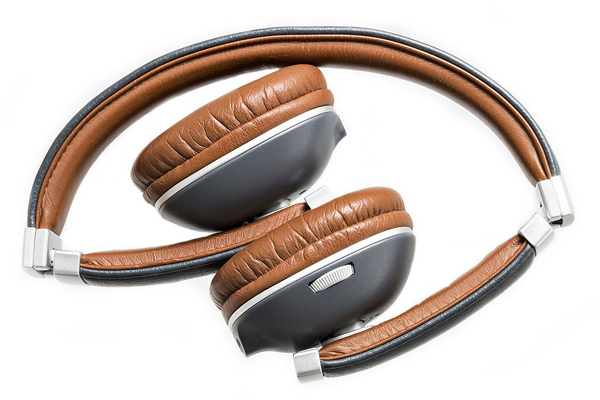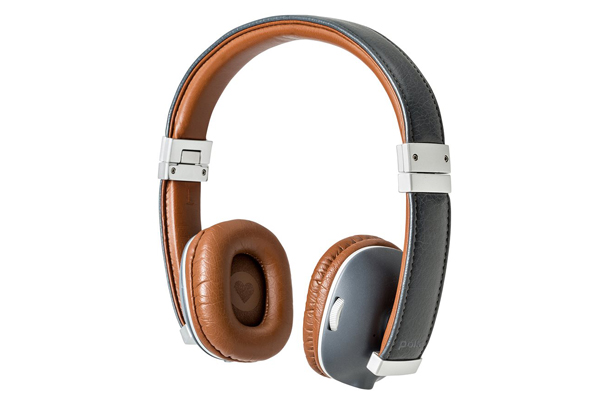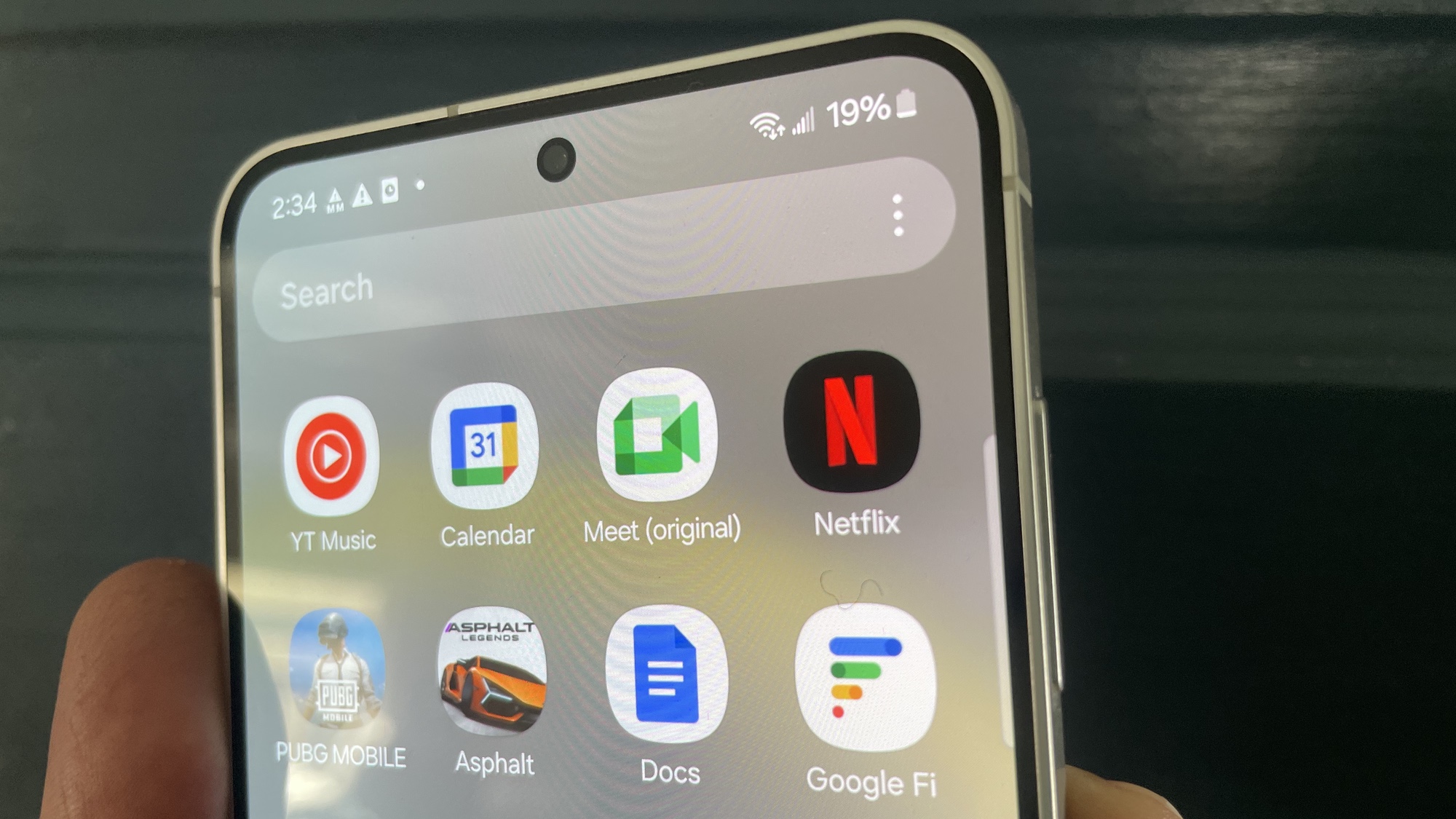Tom's Guide Verdict
The Polk Audio Hinge Wireless Headphones deliver full bass with 12 hours of battery life in a colorful, compact design.
Pros
- +
Rich, powerful bass
- +
Colorful, relatively lightweight design
- +
Solid battery life
- +
Good call quality.
Cons
- -
Clunky multifunction button
- -
Uncomfortable fit after a few hours.
Why you can trust Tom's Guide

Bass junkies, lend Polk Audio your ears! The company's latest pair of headphones, the Hinge Wireless ($199), serve up heaping helpings of thumping, throbbing lows in a lightweight, colorful package. These feathery cans also offer 12 hours of wireless listening, so you can groove with no strings attached. However, a clunky function button and an uncomfortable fit keep the Hinges from hitting headphone nirvana.
Design
The Hinge headphones are polarizing, to say the least. A few of my colleagues loved the '70s sensibilities of the plastic headphones' grayish-blue/burnt-orange color scheme, while others turned up their noses.
My co-worker Kenneth put it best: "They look like a well-designed pair of cheap headphones. They're not luxe, but they're not bargain-basement, either."
Personally, I liked the feel of the faux leather, particularly the padded orange undercarriage. However, I would have preferred that Polk had swapped out the orange for a tan color, or put it on the top of the band, as it's the more eye-catching hue.

The headphones' titular hinges are made from a sturdy gray anodized aluminum. The joints fold upward, allowing the cans to fit into the bundled canvas carry bag. You'll find more metal at the ends of the bands holding the ear cups.
The ear cups are made of a combination of blue-gray plastic and the ruddy orange pleather used on the headband. The left ear cup holds a built-in NFC chip and an audio port, while the right cup sports a cheap-looking gray plastic dial that acts as the multifunction button. You'll find an LED-illuminated microUSB port at the bottom of the cup.
Comfort
Wearing the Hinges was a fairly comfortable experience. The 7.9-ounce headphones sat flush against my ears, although I felt more pressure around the top than I did the bottom. It wasn't uncomfortable, but it never felt like I wasn't wearing headphones. I also noticed that the cans wobbled if I moved my head to the left or right too quickly.
MORE: Best Headphones
I preferred wearing the 5.9-ounce Sony MDRZX550BN headphones. Not only are the MDRs lighter, but the nicely cushioned ear pads distributed pressure evenly and stayed put, regardless of my spastic head movements.
Multifunction Button
How many buttons does it take to change the volume, answer phone calls and skip tracks on a pair of headphones? Just one, and Polk uses the Hinge headphones' lone dial for all its worth.
Turning on the cans involves pressing and holding the knob for 2 seconds. To pause or play a song, you just quickly depress the button. Adjusting volume requires you to spin the dial up or down, and hold it until you reach your desired level. Skipping forward or backward on tracks requires a quick two-button or three-button press, respectively. When fielding phone calls, a quick button tap answers/ends a call or switches between calls.
While I applaud Polk's attempt to cut down on the buttons, inputting commands with the knob isn't precise enough to be feasible. When I tried to enter Bluetooth pairing mode, the headphones inadvertently shut down. I eventually got the headphones to pair with my HTC One M8 for Windows phone, but doing so over NFC delivered a much less frustrating user experience.
Performance
For such a compact set of headphones, the Hinge Wireless headset packs a surprising amount of bass. It's great for tracks like Jay Z's "No Church in the Wild," where Frank Ocean's tremulous tenor coasts over full lows punctuated by airy synthesized strings. The performance was so sharp, I could hear Jay Z's breath as he said "priest" and "feast." Although the MDRs delivered a relatively balanced, spacious soundstage, they lacked the liveliness of the Hinges.
Neither set of headphones proved the best on Usher's "Here I Stand." I noticed that the reverb from the keyboard and electronic wind instrument was too hard, creating a grainy, grating sound that consistently clashed with the honeyed vocal. But since I have to pick, I'm going with the Sony MDRs, as the sound was slightly little less harsh on my ears with the automatic noise- cancellation enabled.

When you're listening to hip-hop, R&B or electronic dance music, a little extra bass can be great. However, when you're listening to other genres, the additional bass can be a double-edge sword. Guns N' Roses classic "November Rain" was drowning in unnecessary lows, making for a muddy performance with a submerged piano. The Sony's more subdued audio signature allowed every aspect of the track to shine, particularly Slash's electrifying guitar solo.
Bluetooth/NFC
Following the trend of competing wireless headphones, the Hinge can connect to your device via Bluetooth or NFC. Pairing via NFC is as simple as holding the headphones approximately 3 centimeters from a NFC-compatible device and hitting yes at the prompt. Establishing a connection with Bluetooth calls for you to hold down the Hinge's dial for 4 to 5 seconds and following the pairing protocol on your device.
The headphones can save up to eight Bluetooth device profiles at a time. After that, the Hinge will delete the least-used devices to make room for more.
MORE: Best Bluetooth Speakers
Battery Life
According to Polk Audio, the Hinge Wireless can last up to 12 hours on a single charge. After using the headphones for approximately 2 hours a day over the course of a week, I got a notification at the beginning of the sixth day alerting me that it was time for a recharge. The Sony MDRZX550BN headphones lasted 16 hours, which is impressive, but not enough to dethrone the Plantronics BackBeat Pro's 60-hour battery life.
Call Quality
I called my mom to test the Hinge Wireless' call quality. The call sounded like she was speaking through several damp towels, down a rather long corridor. However, she reported that she heard me loud and clear, and didn't realize I was using a pair of headphones until I told her.
Bottom Line
The $199 Polk Hinge Wireless headphones have a lot going for them. The vivid color scheme catches the eye, while the deep bass will please the average listener. You'll get at least 10 hours of battery life with everyday use, and when the battery dies, you can plug in the included wire to keep the party going.
There are a few niggling details that keep the Hinge Wireless from achieving a higher rating. The multifunction button is clunky in presentation and function. It shouldn't take several tries to pair or adjust volume, and the fit could be better. In terms of value, I prefer the $129 Sony MDRZX550BN headphones, which offer a more neutral audio signature, longer battery life and a more comfortable fit. Still, the Hinge Wireless headphones are a good choice for music lovers looking for a pair of nice-looking cans with a healthy dose of bass.
Sherri L. Smith is a Senior Writer at Tom's Guide. When she's not reviewing the latest headphones and speakers, you'll find her gaming on her Xbox One, PlayStation 4 or PC. Follow Sherri at @misssmith11. Follow us @TomsGuide and on Facebook.
Sherri L. Smith has been cranking out product reviews for Laptopmag.com since 2011. In that time, she's reviewed more than her share of laptops, tablets, smartphones and everything in between. The resident gamer and audio junkie, Sherri was previously a managing editor for Black Web 2.0 and contributed to BET.Com and Popgadget.


